What is the danger of low hemoglobin and how does buckwheat increase it?
Constant fatigue, deterioration of the condition of the skin, nails and hair, causeless weakness: all these are symptoms of anemia (or, in simple terms, anemia). One of the most popular foods that contains iron and increases hemoglobin is buckwheat.
You will learn about how it affects blood counts and how to take it correctly in our article.
What is the danger of low hemoglobin
Hemoglobin is a protein that is part of red blood cells (erythrocytes), responsible for oxygen supply to tissues and organs.
When the number of red blood cells decreases, a person develops anemia. The body stops receiving the required amount of oxygen, and the functioning of all systems is disrupted.
In an adult
Reduced hemoglobin is most often observed for the following reasons:
- Vegetarianism. Since the diet is based on plant foods, the iron received is not enough to maintain normal hemoglobin levels.
- Intestinal parasites. They intercept all incoming microelements and vitamins, which also affects the development of anemia.
- Various problems with the gastrointestinal tract interfere with the absorption of iron.
- Severe blood loss caused by wounds, surgery, menstruation, bleeding that occurs during childbirth and abortion, as well as when donating blood and its components.
- Pregnancy and breastfeeding.Iron, which is contained in the blood, is necessary not only for the mother, but also for the child for full development. By the end of pregnancy, iron reserves are noticeably depleted, so complete recovery requires another 2-3 years, which occur during the period of breastfeeding.
Iron deficiency manifests itself:
- deterioration of the condition of the skin, nails and hair;
- dizziness and fainting;
- numbness of the arms and legs, causeless weakness;
- memory impairment;
- slowing down nervous reactions;
- problems with the heart and blood vessels;
- decreased immunity.
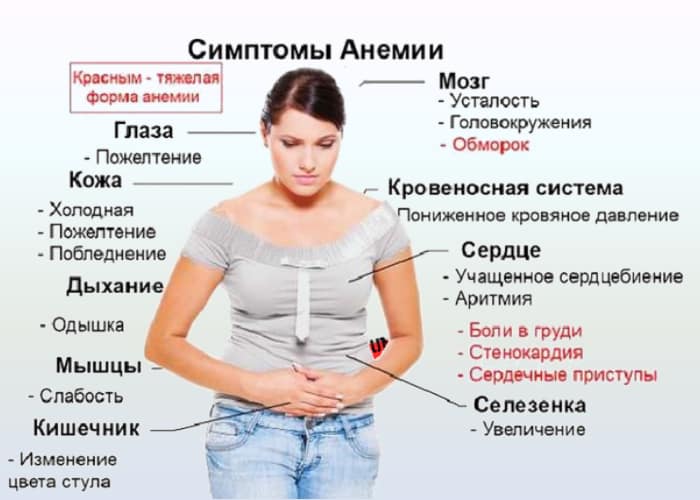
In pregnant women
Low hemoglobin is a common occurrence during pregnancy. The fact is that during this period the need for iron increases significantly, but it does not always enter the body in the required quantity.
Symptoms of anemia:
- weakness;
- brittle nails;
- hair problems;
- pallor;
- change in taste;
- addiction to unusual smells;
- dyspnea;
- chest pain or rapid heartbeat.
With low hemoglobin, serious changes occur in the mother’s body:
- immunity decreases;
- blood clotting is impaired;
- the risk of complications during pregnancy increases;
- placental insufficiency develops;
- toxicosis increases;
- fetal hypoxia develops;
- labor activity weakens;
- the risk of premature birth increases;
- bleeding increases during or after childbirth.
Although low hemoglobin affects the mother, it also affects the baby. Thus, newborns gain weight worse.
Reference. A child under 2 years of age is provided with 70% iron from the mother.
In children
Often, a low hemoglobin level occurs in a child. The symptoms are as follows:
- dizziness;
- cardiopalmus;
- fainting;
- apathy;
- lethargy;
- headache;
- breathing problems;
- depression;
- dryness and pallor of the skin;
- brittle nails;
- thinning and hair loss.
Among the causes of anemia in a child:
- malnutrition;
- iron deficiency in the mother during and after pregnancy;
- hereditary diseases;
- bone marrow pathologies;
- problems with the gastrointestinal tract;
- infectious or parasitic diseases.
Lack of hemoglobin negatively affects the child’s immunity, physical and mental development.

In the elderly
Older people do not suffer from anemia as often as is commonly believed. Their symptoms are usually mild, which makes correct diagnosis difficult in the future. You can accurately determine your hemoglobin level by taking a general blood test.
How does buckwheat affect hemoglobin levels?
Many people are interested in whether buckwheat increases hemoglobin or not. Yes, it increases, and this is not the only beneficial effect of the product.
The beneficial effects of buckwheat on the body are manifested as follows:
- Iron, folic and ascorbic acids stimulate the formation of red blood cells, improve complexion, skin condition, hair, nails and overall well-being.
- Potassium maintains normal blood pressure.
- Rutin thickens the walls of blood vessels and improves blood circulation in general.
How to increase hemoglobin with buckwheat
With low hemoglobin, doctors recommend more often including buckwheat in any form in the diet. This is a hypoallergenic product, so there is no health risk when consuming it.
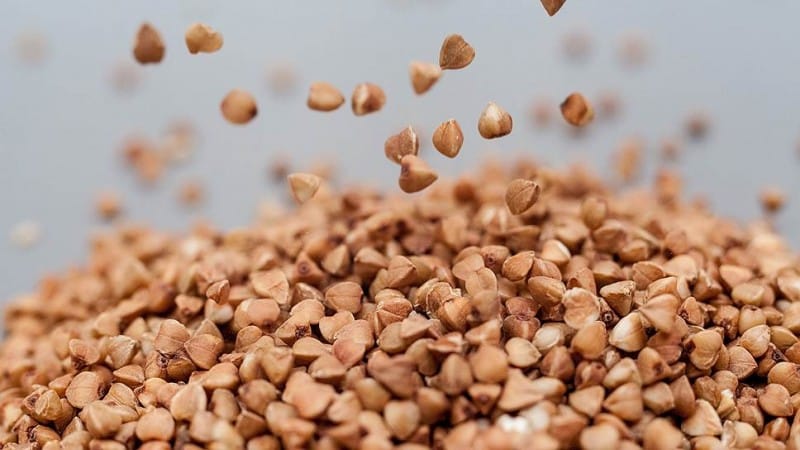
Buckwheat is the most beneficial food for anemia:
- green;
- ground;
- in combination with kefir, honey and walnuts.
Thanks to this, not only the level of hemoglobin in the blood increases, but also the entire cardiovascular system is strengthened. But eating one buckwheat will not be enough in the fight against anemia.
Other recommendations:
- Drink plenty of clean water.
- Don't give in to stress.
- Spend time outdoors.
- To refuse from bad habits.
- Exercise.
- Live in favorable environmental conditions.
Recipes for increasing hemoglobin with buckwheat
Buckwheat is one of the most popular and healthy cereals. Most often it is simply boiled, but there are many other methods of preparation.
With ground buckwheat
To increase hemoglobin, it is recommended to consume ground buckwheat. It is much more easily absorbed by the body, and porridge made from it are similar in consistency to puree.
Recipe:
- Rinse the cereal and dry it in a hot frying pan.
- Then grind it yourself - manually or using a coffee grinder, meat grinder, etc.
- Pour ground dry buckwheat with warm, clean water. Leave until porridge forms.
It is recommended to eat it as an afternoon snack or replace all snacks during the day. Thanks to the resulting consistency, it is suitable for the diet of children and the diet of the elderly.
Buckwheat with kefir
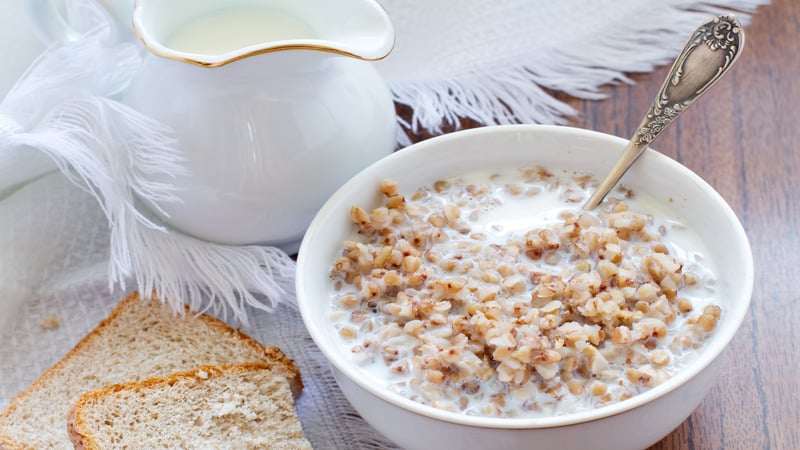
One of the simplest recipes is buckwheat with kefir. To do this you need:
- buckwheat - 5 tbsp. l.;
- low-fat kefir - 300 ml.
Preparation:
- Rinse the cereal.
- Pour kefir over buckwheat.
- Leave in the refrigerator for 6 to 8 hours.
It is recommended to consume on an empty stomach.
Buckwheat with honey and nuts
Buckwheat, walnuts and honey contain many nutrients. They strengthen the body and increase the level of hemoglobin in the blood.
Ingredients:
- core - 1 kg (preferably green);
- peeled walnuts - 1 kg;
- honey - 700 g.
Preparation:
- Cook the buckwheat porridge until it is crumbly. The process takes no more than 20 minutes.
- Add honey and crushed walnuts.
- To stir thoroughly.
Recommended to be consumed warm and in the first half of the day.
Other
Equally healthy is raw green buckwheat. Its main difference from the one we are used to is that green buckwheat has not been subjected to heat treatment, which means that all useful substances are completely preserved in it.
It is prepared in the same way as brown cereal, or eaten sprouted in salads.
To germinate green buckwheat at home, you will need:
- green buckwheat - serving size is calculated individually;
- filtered water.
Preparation:
- Wash the seeds.
- Place the grains in a bowl where they will germinate.
- In 1 tbsp. buckwheat pour 3 tbsp. water.
- Leave to swell for 3 hours.
- Rinse the grains again.
- Spread in a thin layer and cover with gauze on top.
- Place the container in a warm place for a day.
The optimal size of sprouts for eating is about 2-3 mm. To stop their growth, put them in the refrigerator for a while.
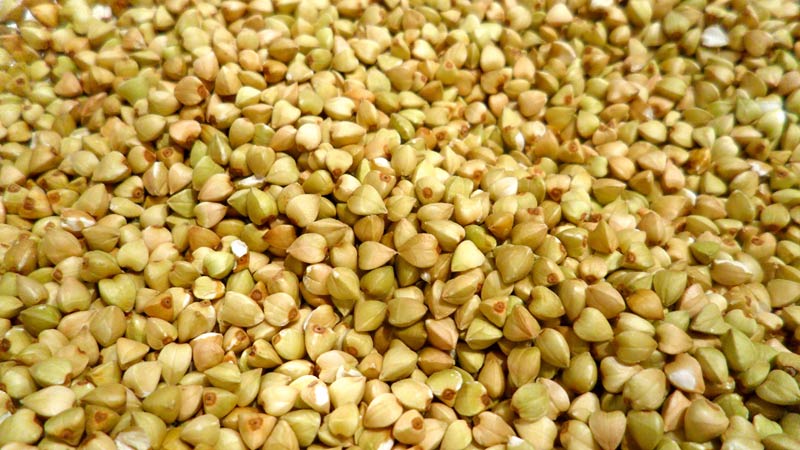
Possible harm and contraindications
Buckwheat is not recommended for use if:
- Gastrointestinal diseases. Poorly steamed or cooked buckwheat is poorly digestible.
- Hypotension. Magnesium, which is contained in buckwheat, relaxes the walls of blood vessels so much that it leads to a sharp decrease in blood pressure.
- Individual intolerance.
Tips and tricks
To prevent anemia, doctors recommend:
- Eat right, include foods containing iron (meat, greens, fruits and vegetables) in your daily diet.
- Spend more time outdoors.
- Get a blood test once a year.
- Contact a specialist if acute infectious and viral diseases occur.
- Have a medical examination annually. Anemia can be a consequence of other health problems.
- Plan a pregnancy. This approach will minimize all possible risks to the health of the mother and baby, which also include anemia.
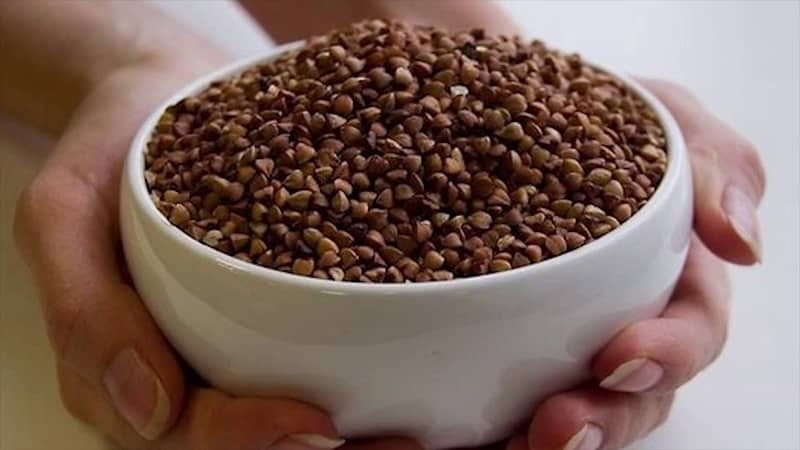
Here's what doctors say about treating anemia.
Alekseeva I. A., hematologist: “If you cannot increase hemoglobin to a normal level with the help of food, for example, buckwheat, then it is better to immediately consult a specialist. He will already prescribe iron supplements.”
Fedorov E.V., hematologist: “If you have low hemoglobin, it is better to consult a doctor immediately. And if the degree of anemia is insignificant, then yes, you will simply be advised to eat as many foods as possible that contain a sufficient amount of iron. Buckwheat is an excellent option for raising hemoglobin. But diagnosing yourself is unacceptable; examination by a specialist is mandatory.”
Conclusion
Eating buckwheat is a simple and effective way to increase hemoglobin levels. The presence of a large amount of useful and nutrients in it will help improve health.
But remember that if your hemoglobin is low, you should first consult a doctor. He will order an examination, identify the causes of the disease and prescribe appropriate treatment, including dietary nutrition, which will probably include buckwheat.